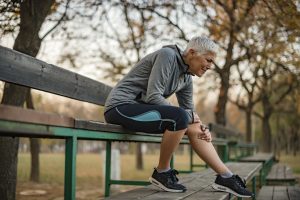 Physical exercise is an essential part of managing symptoms of arthritis. It can help by strengthening the muscles around the affected joints, decreasing bone loss, and reducing joint stiffness and pain. Another benefit of regular exercise is keeping your weight at a healthy level, which also helps to reduce stress placed on your joints.
Physical exercise is an essential part of managing symptoms of arthritis. It can help by strengthening the muscles around the affected joints, decreasing bone loss, and reducing joint stiffness and pain. Another benefit of regular exercise is keeping your weight at a healthy level, which also helps to reduce stress placed on your joints.
The best forms of physical activity for managing arthritis are low-impact, meaning that they place little stress on your body and alleviate symptoms. Three of these types of exercises include:
Walking: Walking each day for up to one hour can reduce pain, stiffness, and inflammation in your joints caused by arthritis. If needed, you can break up this hour of walking into several ten-minute walks, resting between each one. It’s best to try to cover up to three miles in an hour of walking, but you can work up to this intensity level; any amount of regular walking is beneficial.
Cycling: Another great form of exercise for managing your arthritis symptoms is cycling, which can be done in either an indoor (with a stationary bike) or outdoor (with a bicycle, tricycle, or e-bike) setting. Cycling allows your joints, particularly your knees, to move through their full range of motion, producing synovial fluid that lubricates the joints and allows them to move more easily throughout the day.
Swimming: Swimming and other forms of aquatic exercise can help your arthritis symptoms by stimulating blood circulation, building your strength and cardiovascular conditioning, and increasing the flexibility of your joints. Water’s buoyancy reduces the stress placed on your body by exercise, causing less of an impact on your joints.
If you experience pain from arthritis, talk to a doctor about what you should do to manage your symptoms. You can visit a specialist and discuss treatment options at Flushing Hospital Medical Center’s Ambulatory Care Center. To schedule an appointment, please call (718) 670-5486.
All content of this newsletter is intended for general information purposes only and is not intended or implied to be a substitute for professional medical advice, diagnosis or treatment. Please consult a medical professional before adopting any of the suggestions on this page. You must never disregard professional medical advice or delay seeking medical treatment based upon any content of this newsletter. PROMPTLY CONSULT YOUR PHYSICIAN OR CALL 911 IF YOU BELIEVE YOU HAVE A MEDICAL EMERGENCY.
